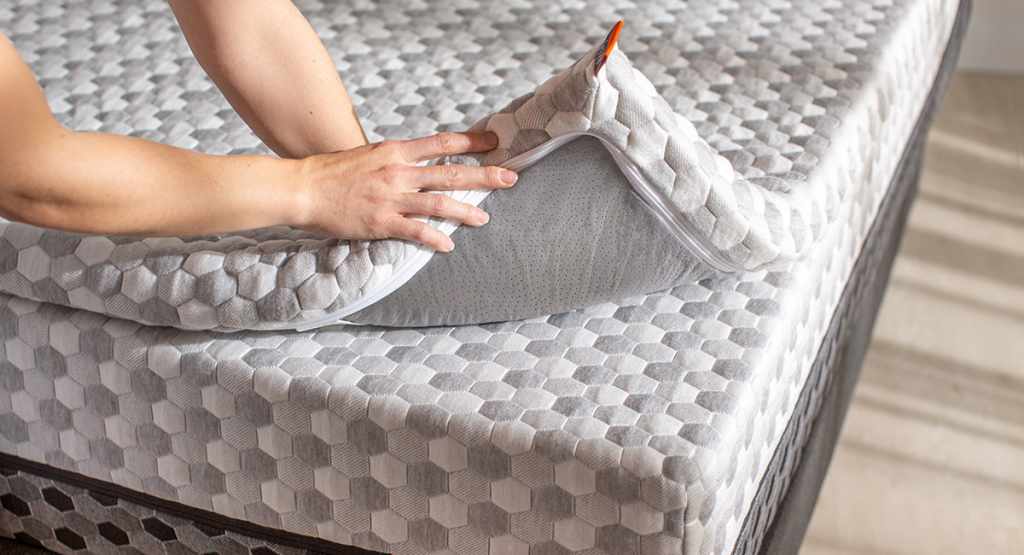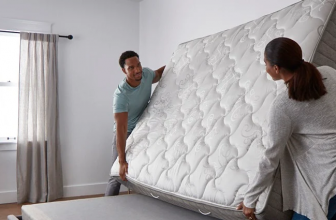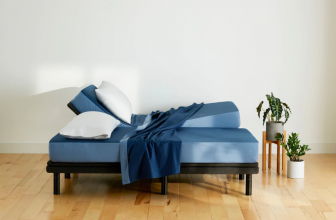Brief: How To Pick A Mattress
- Determining Mattress Type: Choose between innerspring, foam, and air mattresses. Each type has unique benefits. Innerspring offers durability and firmness; foam provides comfort and contouring; air mattresses offer adjustability.
- Budget Considerations: Set a realistic budget. Costs vary based on type, quality, and features. Remember, a higher price doesn’t always guarantee better quality.
- Mattress Size: Ensure the mattress fits your room and meets your space needs. Consider the bed’s dimensions and your height.
- Firmness Level: Mattress firmness ranges from 1 (soft) to 10 (very firm). Your choice should align with your sleeping position and comfort preferences. Heavier individuals might prefer firmer options for support.
- Topper Choice: Consider adding a topper for extra comfort. Options include memory foam for back pain relief, or latex and wool for allergy sufferers.
- Weight and Height Considerations: Ensure the mattress suits your body size. Heavier sleepers might need a queen-sized mattress for additional space and comfort.
- Firm Mattress Benefits: Offers spinal support, suitable for stomach and back sleepers, and may alleviate back pain. However, side sleepers might find them uncomfortable.
- Choosing Factors: Prioritize construction, materials, support layers, comfort layers, and firmness. The mattress should suit your sleeping position and comfort needs.
- Comfort Layers: Look for contouring and supportive materials like gel-infused memory foam, high-density foam, or natural latex.
- Brand and Price: Research brands known for quality firm mattresses, such as Saatva, Avocado, Brooklyn Bedding, and Casper. Prices vary, so consider options within your budget.
- Adjustable Base Compatibility: Firm mattresses work well with adjustable bases.
- Trial Period: Allow a trial period (at least 30 days) to adjust to the new mattress and determine if it suits your needs.
- FAQs:
- Firm Mattress Definition: Designed with denser materials for extra support.
- Choosing the Right Size: Consider personal preference and bedroom space.
- Side Sleeper Suitability: Medium-firm mattresses may be more appropriate for side sleepers.
- Firm Mattresses and Temperature: They can be as cool as softer mattresses, especially those with cooling technologies.
We all know what a mattress is, but it’s not always that easy to pick out the best one for yourself. There are so many different options and factors to consider, making the process all too complicated. But with this in mind, we’ve put together a guide that will hopefully take the guesswork out of your choice and help you to select the best mattress for yourself.

How To Pick A Mattress: 6 Proven Steps
So you’ve decided to buy a new mattress! That’s great news. Choosing the right mattress will have an impact on your physical and mental health, as well as those of your partner. The most important part of this process is figuring out which type of mattress will work best for you.
If you don’t fall asleep quickly or often wake up feeling unrefreshed, you likely need a softer surface. Soft mattresses are made from materials such as cotton, coil springs, and foam, and they come in many different thicknesses to suit any weight requirement.

If you wake up with aches or pains during the night, a firmer mattress might be better for you. These sleep surfaces are often made from memory foam and gel beads and are usually sold in thicknesses of 3–6 inches.
Which type is best will depend on many factors such as your weight, physical activity during the day, and personal preference. It always helps talk to a bedding specialist who can help you find the perfect mattress that suits your lifestyle.
Step 1: Choose Mattress Type
There are three main types of mattresses; innerspring, foam, and air. Each type has its benefits and drawbacks.
Innerspring mattresses come in two varieties: open coil and pocket coil. Open coil mattresses tend to be more durable, and the springs can be felt in certain positions, such as lying on your back or stomach; however, they are more likely to conform to your body shape over time, which may not always be a good thing.
Pocket coils offer a firmer sleep surface that doesn’t change shape as much when you move around. They also hold their shape for longer than open coils, making them a popular choice for couples.
Foam mattresses are made from polyurethane foam and come in different thicknesses. Coils of foam tend to be 5–15 inches thick, whereas open coil and pocket coil mattresses tend to be 3–6 inches. Foam mattresses can be warmed up in the same way as a memory foam mattress to encourage a more comfortable sleep.
Air mattresses are made from layers of high-quality air-filled cushions that encase individual springs. The air is then surrounded by a thick layer of material such as cotton or wool, which protects the air from outside influences and helps to maintain its shape.
Step 2: Set Your Budget
Once you’ve determined which type of mattress will suit you best, it’s time to set your budget and start shopping. The cost of a new mattress can vary widely depending on whether you’re considering a spring, foam, or air mattress; and whether or not it comes with a topper. Mattresses with a soft topper will be much more comfortable than those without, but they are also more expensive and tend to wear out more quickly.
Step 3: Determine Mattress Size
Most stores will be able to provide you with a few material samples before you make your final purchase. These are usually made from polyurethane and can be cut into various sizes. It’s important to ensure that you get the right size bed for your room and your sleeping needs, so always measure twice and buy once.

Mattresses are usually sold in single sizes; however, if you have a very small bedroom or guest room, it may make more sense to buy two mattresses of the same size to create another twin-sized bed. This will allow you to save a bit of space and money in the long run.
Step 4: Determine Mattress Firmness
Mattress firmness is measured on a scale from 1 to 10. The higher the number, the firmer it will be. It’s important to try out mattresses in person before you buy them because they can feel very different on the sales floor than they do in your bedroom when you set them up.

You also need to factor in the weight of the person using the mattress. If you’re a heavier sleeper who weighs more than 200 pounds, consider buying a firmer mattress so it will support your weight. If you weigh less than 200 pounds, you’ll probably be better off with a softer surface.
Step 5: Choose A Topper
Toppers make a big difference to the feel of a mattress. They can be placed on top of any mattress and are sometimes known as mattress toppers, pillow mattresses, and foam mattresses.
Most people like to place a memory foam topper on top of their existing mattress. It’s an ideal choice for those with back pain, those who sleep hot, and people who will benefit from a bit more cushioning during the night.

However, if your primary concern is getting rid of body aches and pains during the night, you might be better off investing in an air-filled mattress instead. These surfaces tend to be less expensive than their memory foam counterparts.
If you prefer a softer mattress but still want to prevent the build-up of pressure points, you may want to consider using a latex (foam) and wool mattress pad. These are often used by people who are allergic to wool or simply want something easier to maintain, and they tend to be better for people with allergies.
If you like the idea of having two mattresses in one, consider buying a mattress that comes with a foam mattress protector. These can be placed on top of your existing mattress and provide an extra layer of comfort without making your bed feel too soft.
Step 6: Consider Your Weight and Height
Most people are aware that a twin-sized mattress is not designed for a small person. It’s important to ensure that a twin-sized mattress is a suitable size for your body as well as your room and floor space. You should measure your height, but take this into account when deciding the size of the mattress.

If you have very little bedroom space, then your mattress needs to fit in a smaller space. Don’t forget that you may have to store the bed somewhere else if it’s not the right size for your room. You need to consider this when deciding which size mattress is best for you.
If you are a larger person, you should probably consider buying a queen-sized mattress. This will allow for more comfortable sleeping positions and still leave enough room for your feet and legs. You can save money by purchasing two single-sized mattresses of the same type, but they must be big enough to share between two people.
FAQ
What is a firm mattress?
A firm mattress is a mattress that is designed to be firmer than a traditional mattress. It is usually made of much denser materials, such as high gauge innerspring, memory foam, or latex.
What are the benefits of a firm mattress?
A firm mattress provides excellent support for your spine and can help alleviate back pain. It can also be better for those who sleep on their stomachs, as it allows their hips to sink into the mattress at a comfortable level.
What should I look for when choosing a mattress?
Firmness is the most important factor. When selecting a mattress, you should also consider the construction, materials, support layers, and comfort layers included in the mattress.
What is the firmness scale for mattresses?
The firmness scale for mattresses ranges from soft (1 to 2) to extra firm (8 to 10).
What is the difference between a firm mattress and a plush mattress?
A firm mattress is designed to provide the sleeper with more support than a plush mattress. A firm mattress is typically designed with denser material and firmer support layers, while a plush mattress is designed to feel softer and more conforming.
What type of sleeper is best suited for a firm mattress?
A firm mattress is a great choice for back and stomach sleepers who need more support for their spine and hips. The firmness also helps reduce motion transfer, making it great for those who sleep with a partner.
What size should I buy for a mattress?
Mattress size is largely a personal preference. If you are looking for a mattress, you should consider a mattress size that is slightly larger than you would normally choose.
Is a firm mattress good for side sleepers?
While a firm mattress can be comfortable for some side sleepers, a medium-firm mattress may be better suited for those who need more pressure point relief.
What kind of comfort layers are best for a mattress?
When choosing comfort layers for a mattress, look for materials that provide contouring and conforming support, such as gel-infused memory foam, high-density foam, or natural latex.
Are firm mattresses more expensive?
In general, a firm mattress may cost more than a medium-firm or plush mattress due to additional layers of material. However, there is a wide range of price points, so it is possible to find a quality firm mattress on any budget.
Do firm mattresses need to be replaced more often?
Firm mattresses may need to be replaced sooner than softer mattresses, depending on the materials and construction. Look for a mattress with strong warranty coverage, so you can be sure you are investing in a mattress that will last.
What are the best brands for firm mattresses?
Some of the best brands for firm mattresses include Saatva, Avocado, Brooklyn Bedding, and Casper.
Are firm mattresses good for adjustable bases?
Yes, firm mattresses are a great option for adjustable bases, as the firmness helps to minimize the potential for sagging.
Are firm mattresses hot?
No, a firm mattress can be just as cool and comfortable as a softer mattress. Many mattresses are designed with breathable materials and cooling gel infusions to help regulate body temperature.
How long should I wait before deciding if my mattress is right for me?
It is important to give your body time to adjust to the firmness of the mattress. It is recommended you sleep on your new mattress for at least 30 days before making a decision.








